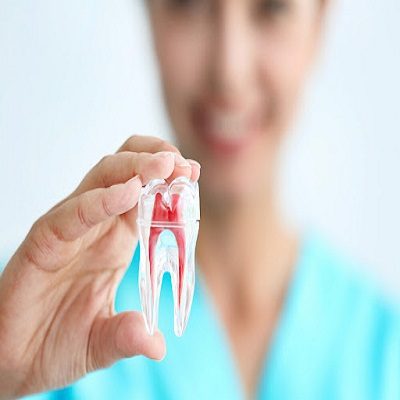The terms “bone fracture” and “broken bone” are often used interchangeably, but they represent the same medical condition—a disruption in the continuity of the bone. The differentiation lies primarily in perception, where “fracture” is considered the clinical term, and “broken bone” is the colloquial equivalent. Medically, fractures can range from minor hairline damage to complete shattering of the bone, with classifications based on the type and severity, such as closed, open, displaced, or comminuted fractures. Furthermore, healthcare professionals can diagnose bone fracture through CT scan, proposing effective treatment strategies. In addition to this, the distinctions regarding bone fractures are critical for determining the appropriate treatment.
Additionally, understanding the nuances of these terms and exploring them further helps patients and healthcare providers communicate effectively about bone injuries and their care. This guide highlights the differences between the two terms, what they mean, why are they used interchangeably, and all relevant facts around them. So, keep reading until the very end!
Understanding Bone Break Versus Fractures—Clarifying the Misconception
More than 1 million Americans encounter bone injuries or fractures, making bone issues one of the most common concerns. Those who have suffered from one might have encountered the terms “fracture” and “break” and wondered if they mean different things. Well, to burst the bubble, and contrary to common belief, these two terms propose the same meaning in medical practice. Furthermore, both these terms refer to a disruption in the structure of the bone.
While some assume that fractures are more severe than breaks—or vice versa—this distinction is purely linguistic, not clinical. However, bone injuries can vary widely in type and complexity. Knowing the distinctions, underlying causes, and categories expedites the recovery and healing phase, helping one better understand how fractures are diagnosed and treated.
Recognizing the Signs of a Bone Fracture
A fracture is often accompanied by distinct symptoms that indicate damage to the bone. Pain is the most common and immediate sign, typically worsening with movement or pressure on the affected area. However, additional symptoms could include;
- Swelling: An inflammatory response causing the area to appear enlarged.
- Numbness: A tingling or loss of sensation near the fracture,
- Bleeding: Visible in open fractures where the bone punctures the skin.
- Bruising or Discoloration: A change in skin color due to internal bleeding.
- Protruding Bone: The fractured bone may break through the skin in severe cases.
When to Seek Emergency Care
If an individual suspects a fracture, visit the emergency room promptly.
- The injury involves multiple fractures or trauma.
- The individual is unable to move or bear weight on the affected limb.
- There is visible bone exposure, significant bleeding, or symptoms of shock.
Fracture VS Bone Breaks—Synonyms Terms and Perception of Severity
Both “fracture” and “broken bone” describe the same condition: a disruption in the bone’s structural integrity. However, the terms are interchangeable in medical contexts, regardless of whether the bone has a minor damage or is completely shattered.
Furthermore, when it comes to the perception of severity, some individuals believe “fracture” refers to less severe injuries, like a small damage. On the other hand, many perceive “break” is often assumed to denote a more serious, complete bone separation. However, both terms encompass the entire spectrum of bone injuries.
Types of Bone Fractures
Fractures are classified based on their severity, location, and characteristics. These distinctions are vital for determining the appropriate treatment plan.
- Complete Fracture: The bone is broken or disrupted into either one or more pieces.
- Incomplete Fracture: The bone damage, however, it does not break all the way through.
- Closed or Simple Fracture: The skin remains intact despite the bone break or injury.
- Open or Compound Fracture: The bone breaks through the skin, increasing the risk of infection and delaying the healing process.
- Comminuted Fracture: Complex fracture where the bone breaks into three or more pieces.
- Stress Fracture: Tiny damage appear on the bone due to stress or pressure or consistent overuse of the bone.
- Pathologic Fracture: The bone breaks due to underlying conditions like osteoporosis or cancer.
Diagnosing Bone Injuries
Precise and accurate diagnosis is imperative for faster and more effective recovery of the original bone structure.
To diagnose a bone injury, the healthcare provider or orthopedic may take the following routes;
- Physical Examination: Doctors check for deformities, swelling, bruising, and impaired mobility.
- Imaging Tests
- X-rays: Standard imaging to determine the location and extent of the fracture.
- CT scans: Provides precise and detailed images of the structure of the bone for complicated fractures.
- MRI: Useful for identifying stress fractures or soft tissue involvement.
- Bone Density Tests: Assess underlying bone health, particularly in patients with osteoporosis or recurrent fractures.
Treatment Approaches
The treatment depends on the type, location, and severity of the fracture.
- Non-Surgical Options
- Immobilization with casts or braces.
- Traction to align bones gradually.
- Physical therapy to restore strength and mobility post-healing.
- Surgical Interventions
- Internal fixation using metal rods, plates, or screws.
- External fixation with devices that stabilize the bone externally.
- Bone grafting for severe fractures where bone fragments are missing.
- Pain Management: Over-the-counter pain relievers or prescription medications may be used during recovery under the strict supervision of an expert.
Latest Insights into Bone Health
- Advancements in Bone Repair
Innovations like 3D-printed implants and biologics are improving recovery outcomes for complex fractures. - Preventive Measures
Strength training and a calcium-rich diet enhance bone density. Moreover, vitamin D supplementation supports calcium absorption. - Focus on Aging and Bone Health
With an aging population, understanding conditions like osteoporosis has become crucial. Furthermore, regular bone density screenings help prevent fractures in vulnerable groups.
Read Also: 10 Facts You Must Know About Bone Fractures
To Wrap Up
While “fracture” and “broken bone” might seem like distinct terms, they share the same meaning in the medical world. However, the differences lie not in terminology but in the type and severity of the injury. In addition, understanding and exploring the various types of fractures, diagnostic methods, and treatments empowers patients to make informed decisions about their care. Furthermore, advancements in medical technology and a proactive approach to bone health are reshaping recovery outcomes and improving the quality of life for those affected by bone injuries.
Finally, the best route to precisely and accurately diagnose bone injuries for quicker recovery is to opt for a comprehensive suite of imaging services. Also, if an individual suspects a bone injury, seeking prompt medical attention is key to ensuring optimal recovery and minimizing complications.











